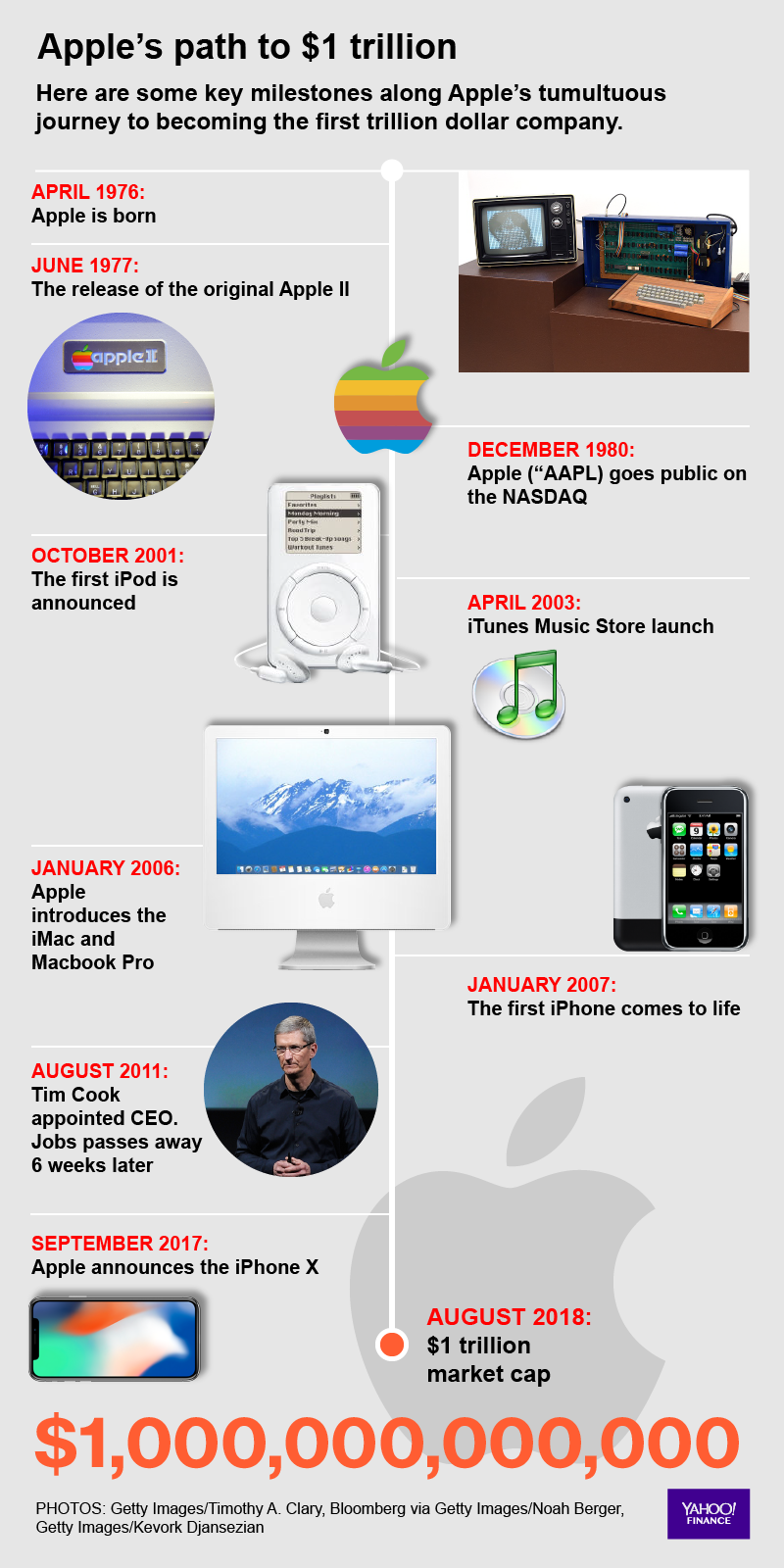How Apple stacks up to behemoths of other eras
Apple (AAPL) briefly hit $1 trillion in market value today at 11:49am ET, becoming the first U.S.-listed company to reach the mark.
Here’s a list of the behemoths that have dominated world trade and business:

77 million Dutch Guilders
The Dutch East India Company was granted a carte blanche on trade — they engaged in voyages to far-flung places, had the ability to establish colonies, create military forces and even initiate wars around the world. It is considered to be the most dominant company of all time.
The European behemoth reached peak valuation in 1720 during the stock market bubble — where it was worth 77 million Dutch Guilders. That translates to $15 billion in today’s measure, according to Global Financial Data’s Bryan Taylor.
That number may seem small in comparison to Apple — but it isn’t.
“Whenever you adjust historical values, they are always going to look undervalued because the size of the economy has grown faster than GDP and personal income,” Taylor told Yahoo Finance in an email.

Biggest pre-depression: Standard Oil
Standard Oil was the first American company that hit the $1 billion mark in 1913 before the U.S. government split it up into more than 30 separate companies. The company was one of the first and largest multinational companies in the world before the break-up, and at its peak, it was equal to 2.5% of GDP then — that’s around $25 billion today.
Biggest giant in the 50’s: General Motors
In 1955, General Motors (GM) became the first $10 billion company. The automaker rode on a massive wave of increased consumer demand for personal vehicles following World War II. Production of cars overall surged almost 45% that year, compared to the year before, pushing up the company’s valuation.

Biggest giant in the 60’s: IBM
IBM (IBM) took over as the largest company in the world in 1967 and held the title for the next 20 years. In 1967, the company was worth $258.6 billion, adjusted for inflation.
During that period they were the dominant player in the computing industry with their mainframe computers — at one point holding 80% of market share in the U.S.
“IBM defined the go-go era of the 1960s and 1970s and gave notice that tech stocks were the dominant industry in the United States,” Taylor wrote in a blog post. But “the personal computer that replaced the mainframes and their huge computing power that created a new market IBM could not dominate.”

Biggest giant in the 90’s: Microsoft
Microsoft (MSFT) zoomed to the top of the list, reaching peak valuation in 1999 at the height of the Dotcom bubble. At that time, the company was worth $912 billion. Despite losing its position, Microsoft is still one of the biggest blue chip companies on the stock market.
Biggest in the world by revenue: Walmart
Stepping away from the equity market — when you look at revenue numbers — the winner is Walmart (WMT). Fortune released its annual Global 500 list in July and the grocery chain came out on top with $500,343 million in revenue. Apple ranked 11th on the list at $229,234 on the Fortune rankings.
‘Once in a lifetime, if you’re lucky’
After the stock hit $1 trillion, CEO of Ritholtz Wealth Management Joshua Brown described Apple as nothing short of “a miracle, unlikely to be repeated ever. …
“None of us should expect to see anything like this ever again,” Brown concluded. “This is a once in a lifetime business story, if you’re lucky.”
—

Follow Aarthi on Twitter.
Related:

